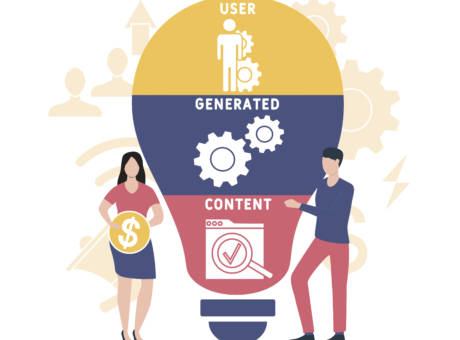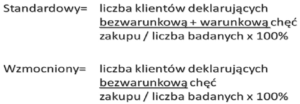
How to measure the results of marketing activities? Basic tools
The effectiveness and efficiency of advertising depend not only on a well-developed strategy and selection of the right tool but also on the verification and ongoing analysis of the actions taken. Changes in market trends, increased involvement of competitors and increasing customer expectations mean that even a perfect strategy will require improvement after some time.
The evaluation of the effectiveness of advertising and marketing activities concerns the analysis of specific indicators and the right tools.
KEY MARKETING INDICATORS
Ongoing monitoring of the results of implemented marketing campaigns increases the chances of acquiring new customers and increasing profits by adjusting activities to the current market trends, competitiveness and customer expectations. Marketing indicators are analysed, some of which deserve special attention.
When implementing a marketing strategy, we expect that it will generate a specific profit – it should be defined at the stage of drawing up the marketing plan. Therefore, the basic indicator when examining marketing effectiveness is the indicator of income from actions undertaken. Therefore, we need to know where particular customers come from – that is, which marketing campaign brought them to us. Marketing Automation tools offer such features.
When verifying the profitability of sales, the value of a potential customer should also be taken into account. The cost of acquiring a customer cannot be higher than their average value. Otherwise, the costs of the implemented strategy will be higher than the revenues generated from it.
The effectiveness of marketing activities is also measured with the ROMI (return on marketing investment) indicator. It provides the necessary information on all marketing activities we undertake, with the focus on whether they are profitable or loss-making.
We also should not forget about what is happening on our website, where the traffic comes from and what the conversion is on the landing pages (subpages of the website to which the advertisement or link from another website is directed) and on the website, i.e. the main domain. We pay special attention to sales conversion. It determines the ratio of acquired contacts to customers. We measure organic traffic, i.e. we check how many visits to the website come from search engines. In this case, key phrases and the effectiveness of website positioning are of great importance.
VERIFICATION OF PROFITABILITY WITH ROI
We also measure the effectiveness of marketing activities using the ROI (Return On Investment) indicator. It helps us verify the profitability of the implemented marketing campaigns. Thanks to it, we have a better chance to choose the form of advertising that will be the most effective and will bring the most benefits.
ROI is calculated according to the following formula:
ROI = ((sales revenue – total cost) / investment) x 100%
The ROI indicator is primarily used in activities where the goal of conversion is to increase sales. By monitoring the ROI, you are up to date with the profitability of your marketing activities. You know if they are profitable and translate into real profits. The ROI will help you make specific changes to improve their effectiveness, as well as choose the best form of advertising for you. However, it is important to know that with other activities than those aimed at increasing sales, it may be more difficult to determine the costs.
EFFECTIVENESS OF MARKETING ACTIVITIES AND GOOGLE ANALYTICS
One of the basic tools for measuring the effectiveness of marketing activities is Google Analytics. This tool provides us with detailed information about website traffic and thus allows us to assess whether the actions taken are profitable or require changes or improvements.
Google Analytics is a source of sales indicators – with its help we can measure the number of conversions, but also the volume of sales. Moreover, statistics on the source from which the users are directed are also important. Google Analytics provides information that both the owner of the online store and the person managing a trade portal need.
It shows us:
- the current number of visitors to our website;
- what our target group is;
- what features our users have (age, gender, location, and the device they use);
- where from and how they came to our website.
Equally important is the feature enabling measurement of the effectiveness of individual areas of your website. Reports generated by Google Analytics will show you those subpages that are most popular and those that are less popular among users. Based on this, you can better optimise and adjust to search engines the pages that have a low conversion rate.
MARKETING AUTOMATION FOR MARKETING EFFECTIVENESS
We automate more and more activities and processes. The aim is to accelerate and shorten the time of specific work, which is taken over by advanced tools and IT systems. The same applies to Internet marketing. The currently available Marketing Automation tools not only enable you to automate marketing activities but also quickly measure and monitor their effectiveness.
Measuring the effectiveness of marketing with such tools is focused, among others on the number of visits to the website, i.e. similar to Google Analytics. In addition, however, we can better and in more detail define the group of recipients whom we want to reach with our content via the newsletter. Among the monitored sales indicators, there is e.g. the number of new leads in the contacts database. On this basis, we can assess whether our marketing activities are effective enough to bring us enough potential customers. In addition, we also learn how many transactions have been completed and whether we are observing an upward trend after taking specific marketing activities.
Marketing Automation streamlines the sales funnel, i.e. the path that a foreign lead takes to ultimately become a customer. The first stage is gaining attention – the audience is then the largest. Then some of them show interest in a specific product, company, or service, and then even fewer customers make a purchasing decision. They should be at the centre of your activities, and messages should be tailored to their individual needs. This increases the chance of turning the desire aroused in them into a specific action – purchase. Marketing Automation facilitates the segmentation of leads and customers, making it easier to adapt the content to them.
CUSTOMER LOYALTY INDEX
We learn about the importance of the customer loyalty index from many expert publications, including the book “Marketing indicators” by Robert Kozielski. In his book, he points to the most standard customer loyalty ratio, CLR. It is associated, among others, with the AIDAL model, i.e. the extended AIDA model:
- Attention
- Interest
- Desire
- Action
- Loyalty
There is one more model – AIDAS, where satisfaction is the final stage of subsequent customer reactions. Both satisfaction and loyalty increase the likelihood of a customer making a repeated purchase. When calculating this probability, customer declarations are taken into account.
Standard = ((number of customers declaring unconditional + conditional willingness to make the purchase)/ number of respondents) x 100%
Strengthened = ((number of customers declaring unconditional willingness to make the purchase)/ number of respondents) x 100%
Thus, the effectiveness of marketing activities depends not only on the strategy but also on the ongoing changes that are introduced in it. The analysis and monitoring of statistics and marketing indicators will help you on the one hand to avoid problems with the profitability of implemented marketing campaigns, and on the other hand to strengthen the activities that bring effects. Marketing is measurable, which we owe to the dynamic development of IT systems and Big Data. By using them, you can act more consciously, more effectively and towards the intended effect.

REACH CUSTOMERS,
BOOST SALES














